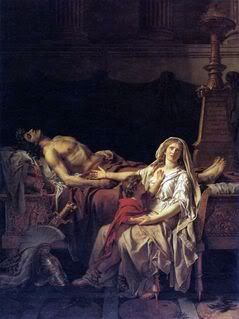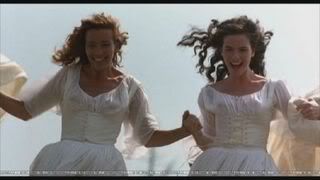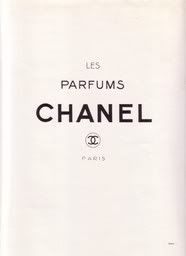
Cheshire Puss,' she began, rather timidly, as she did not at all know whether it would like the name: however, it only grinned a little wider. `Come, it's pleased so far,' thought Alice, and she went on. `Would you tell me, please, which way I ought to go from here?'
`That depends a good deal on where you want to get to,' said the Cat.
`I don't much care where--' said Alice.
`Then it doesn't matter which way you go,' said the Cat. `--so long as I get SOMEWHERE,' Alice added as an explanation.
`Oh, you're sure to do that,' said the Cat, `if you only walk long enough.'
From "Alice in Wonderland" by Lewis Carroll
When passion for perfume meets a fertile imagination you can bet you’re about to see how deep the Rabbit hole goes. The literary association is completely relevant in the case of German based Konstantin Mihov’s Alice in Wonderland, a new ultra niche scent inspired by the immortal tale of Lewis Carroll and its flights of fancy into the world of surreal and grotesque and the first to come out of his line "Parfums d’imperfiction" (what a great name, combining imperfection with fiction!!)
Although the brilliant concept would predispose someone of an experience of really weird Magritte-like emanations that -as if they were fairies or genies- would escape their container to wreck havoc and mayhem, Alice in Wonderland is really meant to give us a glimpse only of the strange world and not a full-on vista.
Indeed, apart from the beginning which I personally thought was the weaker part of the creation with its curiously “blunt” gasoline Artemisia note that was not sour or bitter as expected from that sort of ingredient, the core of the fragrance is a fantasia of glorious violet that is never cloying or oversweet managing to convey a feeling of playfulness.
The top however is completely intentional as Konstantin reveals, meant to evoke a different experience of sipping mint tea without any sweetners.
Alice is an inquisitive little girl and her attitude is in many ways redolent of a curious nature eager to get to the heart of things. By the same token, young Konstantin has been delving in fragrance-making for quite some time, 7 years to be exact, even before his psychology studies at the University, exploring the building blocks of perfumery and combining the forces of natural essences with aroma chemicals to produce scents that would be inspired by his visions and memories.
Alice in Wonderland starts on bitter Artemisia with its tea-like drydown rather dulled and then mingles the herbal aspect of a cooling minty essence and some lavender (I think) with that most curious of perfume notes, violet. Now, that is an aroma that has two basic permutations: the sweet candied school of Guerlain’s Insolence or Malle’s Lipstick Rose (in the later married to rose) or the greener, drier verdancy of Jolie Madame and Ayala Moriel’s Viola. Violets have been making a comeback in recent years after a long absence in which they were considered old-fashioned and obsolete. I consider this a good sign.
Here the violet note tends to go for the sweeter path aided by some vanillic/ hay accord, but it does not go full force in that direction. Rather tentatively it explores the crystalline aspect of it, remaining a little cool but not aloof. Alice also does not powder herself profusely, as she is only a little girl; ergo the perfume is not using that element to achieve dryness and distanced sophistication but remains light hearted.
Konstantin divulged that his violet notes come in fact from synthetic ionones (gamma-methylionone, alpha-ionone), and not from orris root combined with something as I suspected at first (probably due to carrot seed essence). In fact Konstantin impressed me and revealed in one fell swoop his confidence when he revealed actual ingredients of the composition and not mere notes. Not what your average perfumer does and all the more power to him for doing so!
The absence of artificial colouring, glycerins and preservatives is also a plus.
The virtue of the composition lies in the interchange of the herbal and floral and their beautiful dialogue. The base does not differ much from the core and the theme of the perfume echoes like a leitmotif throughout, perhaps underscored by some restrained and austere wood as a backdrop to the mischievous protagonist much like the second characters in the fairy tale.
The lasting power of Alice in Wonderland is good for this kind of scent and the character of the perfume exploring masculine and feminine sides of the same idea makes it suitable for both sexes, if they feel a little adventurous and not firmly type-cast in predestined societal roles.

Last but not least, Konstantin uses his own bold and romantic handwriting on the labels of the apothecary style bottles, in heavy black ink, accounting for a visually very pleasing product.
I wish him many successful fragrant endeavours in the future!
A 50ml/1.7oz bottle of eau de toilette costs 28 euros on Konstantin's own site. Shipping per bottle varies depending on destination - to a European destination, it is 4 euros and to overseas destination, it is 8 euros.
SAMPLES: samples can be ordered at the price of 5 euro which includes shipping anywhere (the samples are 2-3 ml non-spray vials), through email containing a shipping address which will be answered with a Paypal invoice.
Visit his site here
Feel free to email him if you have any questions, requests, or concerns: konstantin.mihov@gmail.com
ADDED: You can also now get your bottle or sample at First-in-Fragrance/ Aus liebe zum duft.com
Top pic artwork by Arthur Rackham 1907 courtesy of bedtime-story.com. Bottle pic courtesy of Konstantin Mihov.
.jpg)










